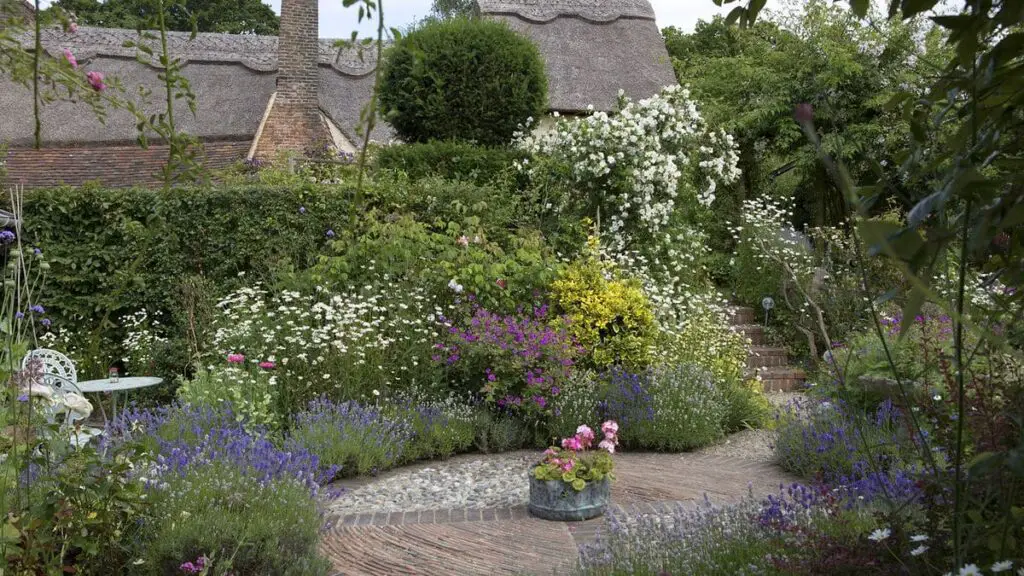A cottage garden, characterized by its charming and informal style, is a horticultural treasure that brings timeless beauty and serenity to any home. This guide will provide comprehensive insights into designing, planting, and maintaining a cottage garden that not only enhances your landscape but also nurtures your soul.
Understanding the Cottage Garden Aesthetic
Cottage gardens originated in England during the 19th century, offering a practical yet picturesque approach to gardening. They are defined by their dense plantings, mix of ornamental and edible plants, and a natural, free-flowing design. The goal is to create a lush, romantic space that feels both welcoming and spontaneous.
Essential Elements of a Cottage Garden
1. Diverse Plant Selection
A hallmark of cottage gardens is the variety of plants used. This includes perennials, annuals, shrubs, and vines. Popular choices include:
- Roses: These are a quintessential feature, offering color, fragrance, and historical significance.
- Lavender: Known for its soothing scent and vibrant purple flowers, lavender is a staple.
- Delphiniums and Hollyhocks: These tall, stately flowers add height and drama.
- Foxgloves: Their tubular flowers attract bees, adding to the garden’s ecological value.
- Edible Plants: Herbs like rosemary and thyme, and vegetables such as tomatoes and lettuce, integrate functionality with beauty.
2. Layered Planting
Cottage gardens thrive on the principle of layered planting, where taller plants are placed at the back and shorter ones at the front. This creates a tiered effect that maximizes visual interest and allows every plant to shine.
3. Meandering Pathways
Incorporating winding pathways made of gravel, brick, or stepping stones helps to create a sense of journey and discovery within the garden. These paths should be narrow and bordered with plants to enhance the intimate, enclosed feel.
4. Rustic Garden Structures
Arbors, trellises, and pergolas are essential features that support climbing plants like clematis and wisteria. These structures not only add height and dimension but also offer shaded spots for relaxation.
5. Wildlife-Friendly Features
A true cottage garden is a haven for wildlife. Including birdbaths, feeders, and bee hotels encourages biodiversity and ensures your garden is teeming with life.
Planning Your Cottage Garden
Site Selection and Preparation
Choose a sunny spot for your cottage garden, as most traditional plants thrive in full sunlight. Begin by clearing the area of any weeds and debris. Enrich the soil with organic compost to improve its fertility and structure.
Designing the Layout
Sketch a rough plan of your garden, marking where each type of plant will go. Remember to balance color, texture, and height. Plant in drifts rather than single specimens to create a more natural look.
Choosing Plants
Select a mix of plants that will bloom at different times of the year to ensure continuous interest. Consider the color palette and how different shades will complement each other. Aim for a harmonious blend of soft pastels and vibrant hues.
Planting Your Cottage Garden
Spring Planting
Spring is the ideal time to start planting. Begin with hardy perennials and shrubs. Dig holes that are twice the width of the root ball and deep enough so the top of the root ball is level with the soil surface. Water the plants thoroughly after planting.
Summer Maintenance
During the summer, regular watering is crucial, especially in the first year as plants establish their roots. Deadhead spent flowers to encourage new blooms and prevent self-seeding unless you prefer a more spontaneous garden.
Autumn Preparation
In the autumn, add a layer of mulch to protect the soil and retain moisture. This is also a good time to plant bulbs for spring blooms.
Maintaining Your Cottage Garden
Pruning and Deadheading
Regular pruning keeps plants healthy and encourages new growth. Deadhead flowers to prolong blooming periods. Cut back perennials in late autumn to tidy up the garden and prepare it for winter.
Pest and Disease Control
Monitor plants regularly for signs of pests or diseases. Organic methods such as neem oil or insecticidal soap can effectively manage common issues like aphids and powdery mildew.
Seasonal Care
Adapt your care routine to the seasons. In winter, protect tender plants with fleece or cloches. In spring, begin fertilizing and pruning early bloomers.
Creating a Sustainable Cottage Garden
Water Conservation
Implement water-saving techniques like using rain barrels and installing a drip irrigation system. Mulching also helps to reduce water evaporation.
Composting
Maintain a compost bin to recycle garden waste into valuable organic matter for your soil. This enhances soil health and reduces the need for chemical fertilizers.
Attracting Pollinators
Planting a variety of nectar-rich flowers will attract bees, butterflies, and other pollinators. Avoid pesticides to ensure these beneficial insects thrive.
Incorporating Personal Touches
Vintage Decor
Add personal touches with vintage garden decor like old wheelbarrows, iron gates, and wooden benches. These elements enhance the charm and individuality of your garden.
Creative Planting Ideas
Experiment with creative planting ideas, such as a themed herb garden, a fairy garden for children, or a color-coordinated flower bed.
Conclusion
Creating a cottage garden is a rewarding endeavor that combines beauty, practicality, and sustainability. By carefully selecting plants, designing thoughtful layouts, and maintaining a wildlife-friendly environment, you can enjoy a timeless garden that offers joy throughout the seasons.


